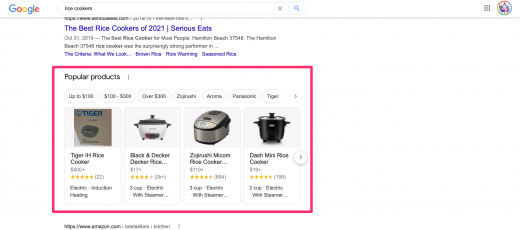WooCommerce Dropshipping: The Ultimate Guide
Have you ever wanted to start an online store but didn’t want to deal with inventory management, fulfillment, shipping, or any other ecommerce shenanigans? Then dropshipping might be perfect for you.
Dropshipping is an order fulfillment method where the seller doesn’t make or stock products but instead uses a third-party supplier to ship products to customers. The seller picks and markets which products they want to sell but may never actually handle any of them.
Dropshipping eliminates a lot of the work, hassle, and expense required to start and run an online store. And with WooCommerce, anyone can create a store and start selling — it’s a win-win combination. If you’re considering WooCommerce dropshipping, read on for everything you need to know about its benefits and downsides, finding products and suppliers for your business, and tips for managing your store.
What is WooCommerce dropshipping?
WooCommerce is one of the ecommerce platforms where dropshippers can create their online store and sell a variety of physical products. Other popular platforms for dropshipping include Shopify, Magento, BigCommerce, and even Instagram.
Regardless of the platform you choose for dropshipping, there are typically three parties involved in the dropshipping process: seller, customer, and supplier.
- Seller: That’s you. You own and run the online store, social media, and overall brand. You’re also the one who markets the products, lists them, and the one customers will come to with any queries.
- Customer: They pay for your products (or abandon their carts) and need to be marketed to so they can find your store.
- Supplier: They handle all order fulfillment once a customer’s order has been sent to them (by you). They find the product in their warehouse(s) and package and ship it on your behalf. They are often the manufacturer of the product.
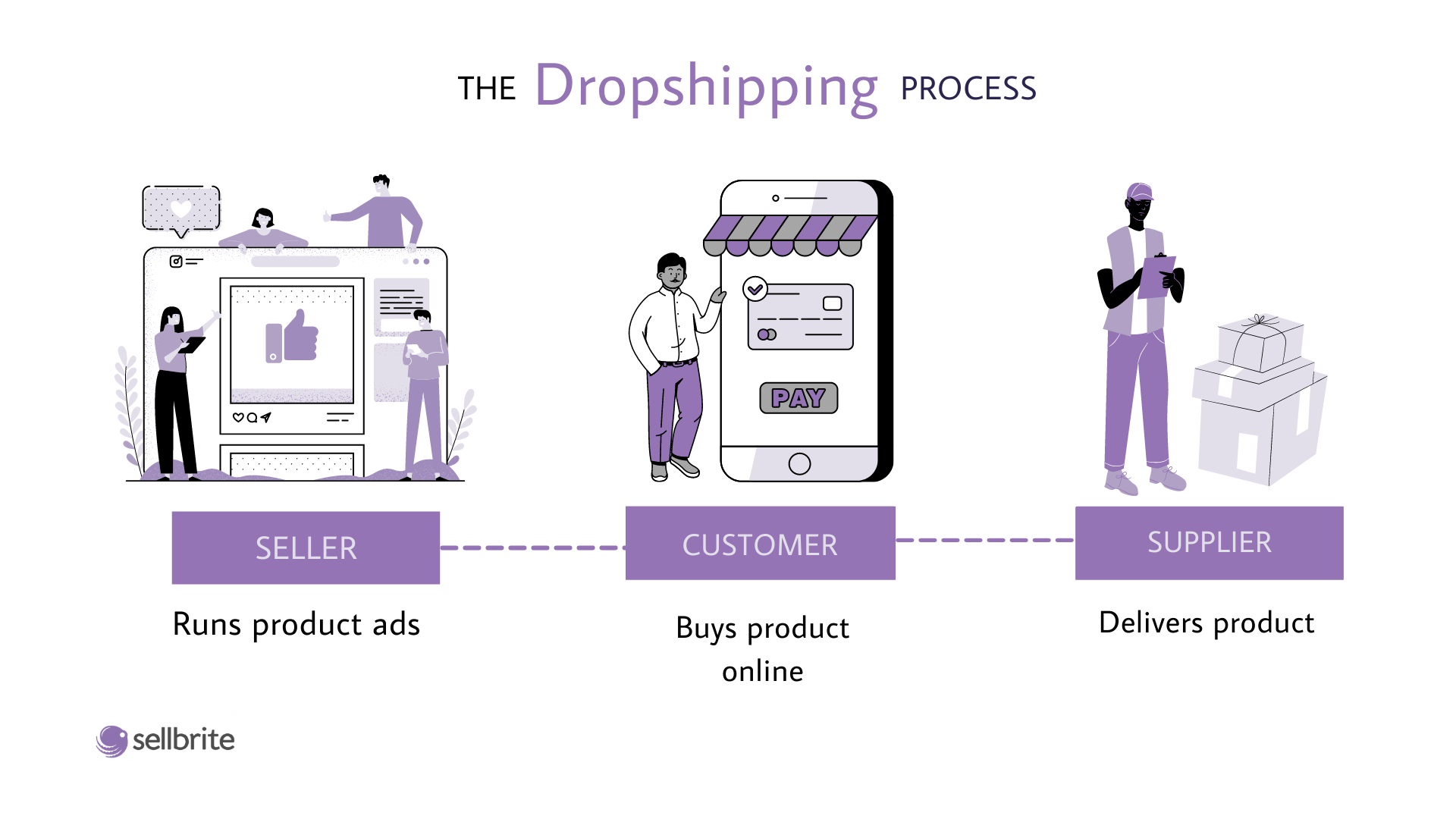
A brief overview of the dropshipping process
The benefits of dropshipping
Dropshipping is a popular choice of order fulfillment among many ecommerce merchants for a reason. According to a survey from Lehigh University, 53% of ecommerce merchants saw increased profit margins after adopting this order fulfillment model.
In addition to increased revenue, dropshipping works because of:
- Low capital requirements. You don’t spend money until you receive payment from the customer. The supplier receives a portion of this payment.
- Zero holding costs. You don’t have to keep up with inventory storage, warehousing costs, or retail store rent.
- Shipping handled by suppliers. As a dropshipper, you don’t actually stock any physical products — suppliers manage inventory and ship products.
- Ease of entry. Dropshipping is fairly simple to get started with — you can do it all from the comfort of your home.
- Easy scalability. Because you’re not creating any products or dealing with warehousing, you can scale your store to sell many products.
The drawbacks of dropshipping
As a new seller, it’s important to be armed with all the information. For all its benefits, dropshipping also has its downsides.
- Slow fulfillment of orders. If your suppliers are outside of your or your customers’ locations, orders may be slow to deliver. This can affect pricing and customers’ experience with your store.
- Supplier relationships are hard to grow and manage. Due to a number of factors, you may run into difficulty with suppliers.
- It can be difficult to find a niche that isn’t oversaturated. This means you’ll need to put more work into differentiating yourself from the competition.
- You won’t be as hands-off as you think. You need to stay on top of suppliers to keep customers coming back.
- You can’t put any special branding on your products unless you can sort it out with your supplier.
- You might have to pay sales taxes depending on your and your customers’ locations and their tax laws. You’ll have to decide if you or your customers will bear the cost of this.
However, don’t let any of these drawbacks scare you away from dropshipping. According to a 2020 report, the dropshipping market is projected to reach $ 591.77 billion by 2027. It’s a lucrative industry that’s only poised to grow as interest in and adoption of ecommerce continues to grow.
Why use WooCommerce for dropshipping?
Simple: Because it’s easy to get started. WooCommerce is the most widely used ecommerce platform around the globe. The major credit for this goes to the plugin — it’s free and easy to install. On the other hand, you might need several plugins to properly set up a dropshipping store, some of which will cost money.
WooCommerce offers a simple interface that’s also familiar to anyone who’s used WordPress before. It has a large community for ecommerce resources and support for new sellers. The WooCommerce plugin is open-source, so you have full control of your store.
What do you need to start dropshipping on WooCommerce?
To begin your dropshipping business with WooCommerce, you’ll need to follow just a few steps.
1. Create a WooCommerce store
If you don’t already have a WooCommerce store, you’ll need to create one to use WooCommerce dropshipping extensions. To create a WooCommerce store, follow these steps.
Step 1: Visit WordPress.com or WordPress.org. With the former, you can simply create an account and install the WooCommerce plugin from the back end. With the latter, you’ll be able to download WordPress and manipulate its functionality however you want. This option is usually preferred by people who want more control over their store.
Step 2: Choose a hosting provider, domain name, and theme.
Step 3: Create and populate your Home, About, and Contact pages.
Step 4: Add products. You can do this much the same way you add posts in WordPress.
Step 5: Select extensions. The WooCommerce website offers a wide range of options to cover sellers’ needs. To start out dropshipping, you’ll need to select plugins that support payments and help with marketing, customer experience, maintenance, security, and taxes.
For more details on using WooCommerce, check out this guide.
2. Choose a WooCommerce dropshipping extension
These are extensions that can be added to a WooCommerce store to make dropshipping easier.
- WooCommerce Dropshipping. This extension is a store management tool that you can integrate with other dropshipping extensions. You can find suppliers through this extension and give them access to your WooCommerce backend to see and fulfill orders made for their products. It helps you import and assign inventory to specific suppliers. It also notifies your suppliers when their products are purchased through your store. It costs $ 49 a year to use.
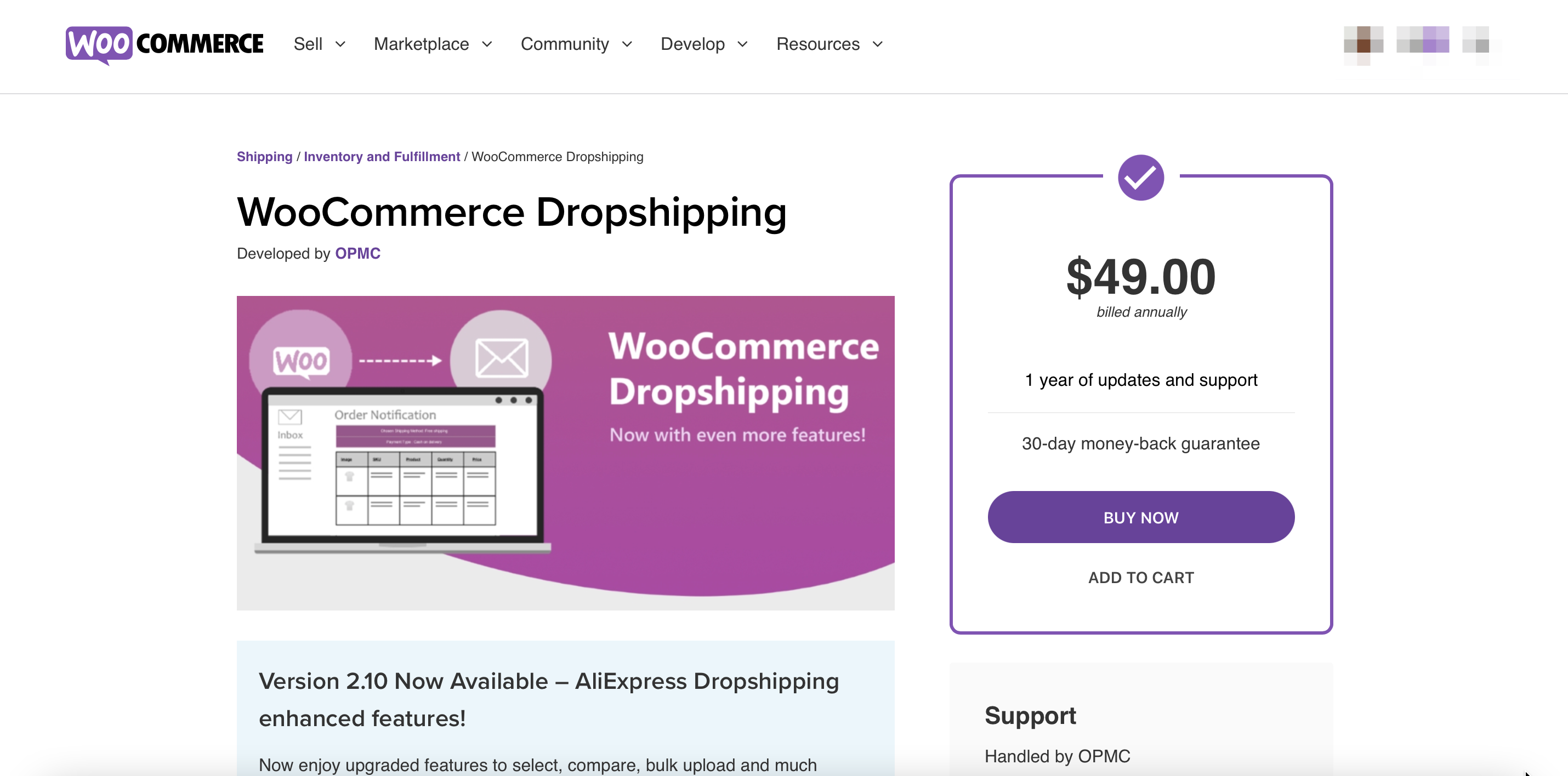
- DropshipMe. This extension is the only free one on this list and is great for finding suppliers from AliExpress. AliExpress is an ecommerce service that lets businesses list their products on its website and dropshippers can contact those businesses to build a supplier relationship with them. The platform does a lot of the research work for you by identifying trending niches. It also connects you to suppliers with high ratings and offers a lot of other great features.
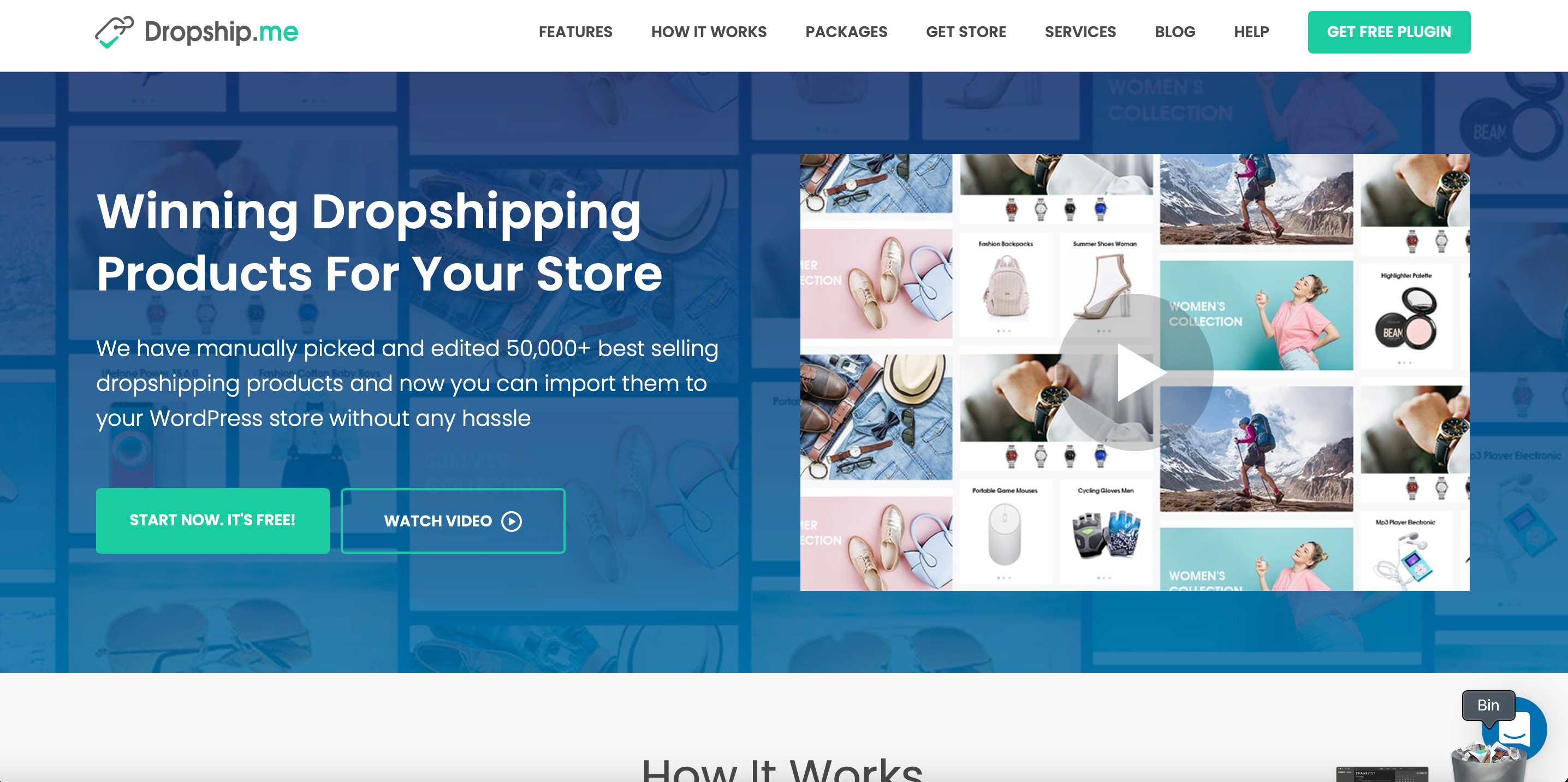
- Spocket. Through this extension, you can get access to a catalog of suppliers from the U.S. as well as globally. This can help you find suppliers that are closer to your customer base and offer faster fulfillment. It offers a free plan that functions as a trial run for sellers to see Spocket’s product catalog. Paid plans start at $ 24 per month.
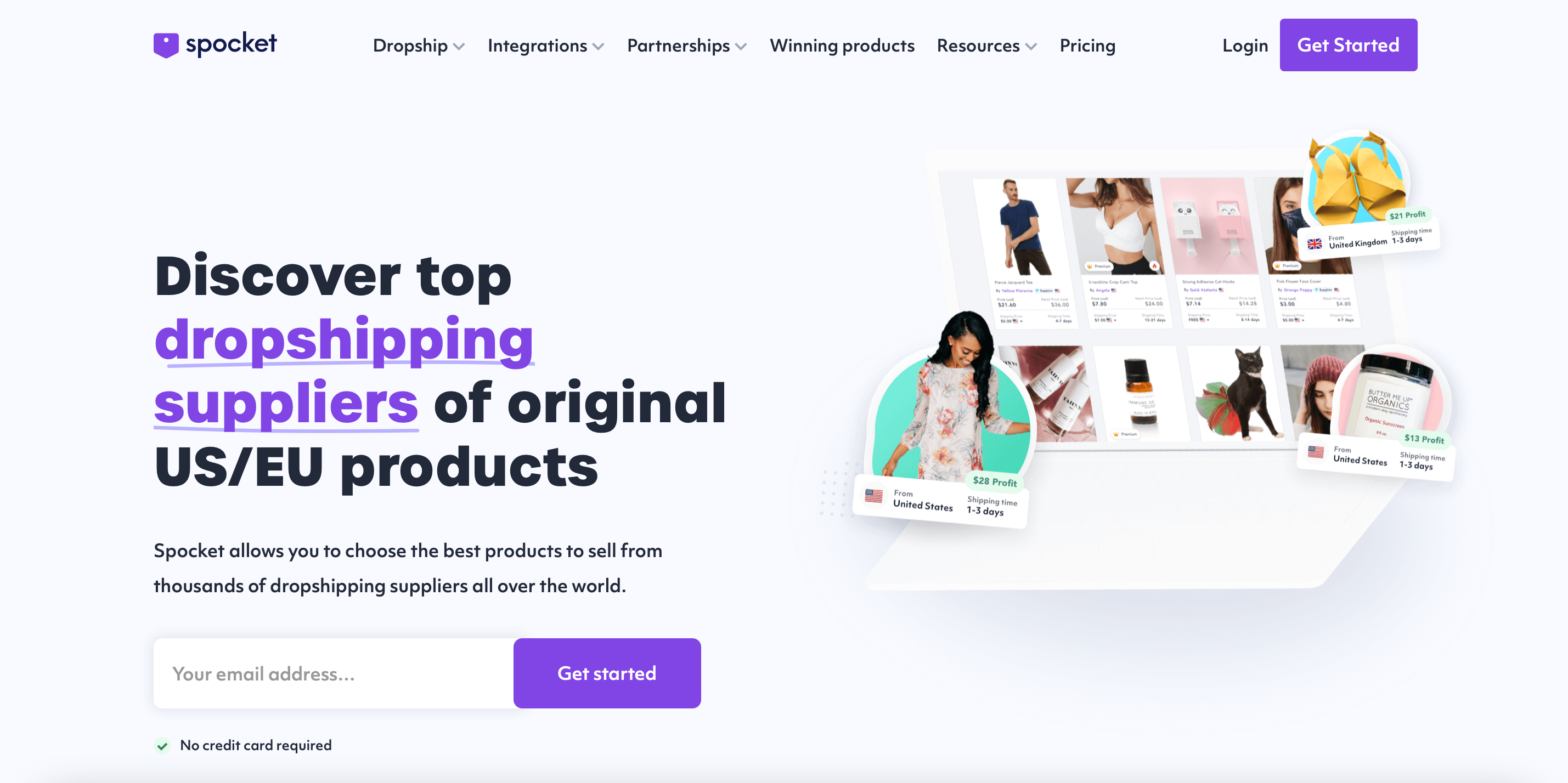
- AliDropship. For a one-time payment of $ 89, the AliDropship plugin lets you import products from AliExpress into your WooCommerce dropshipping store, process clients’ orders, and track your business performance.
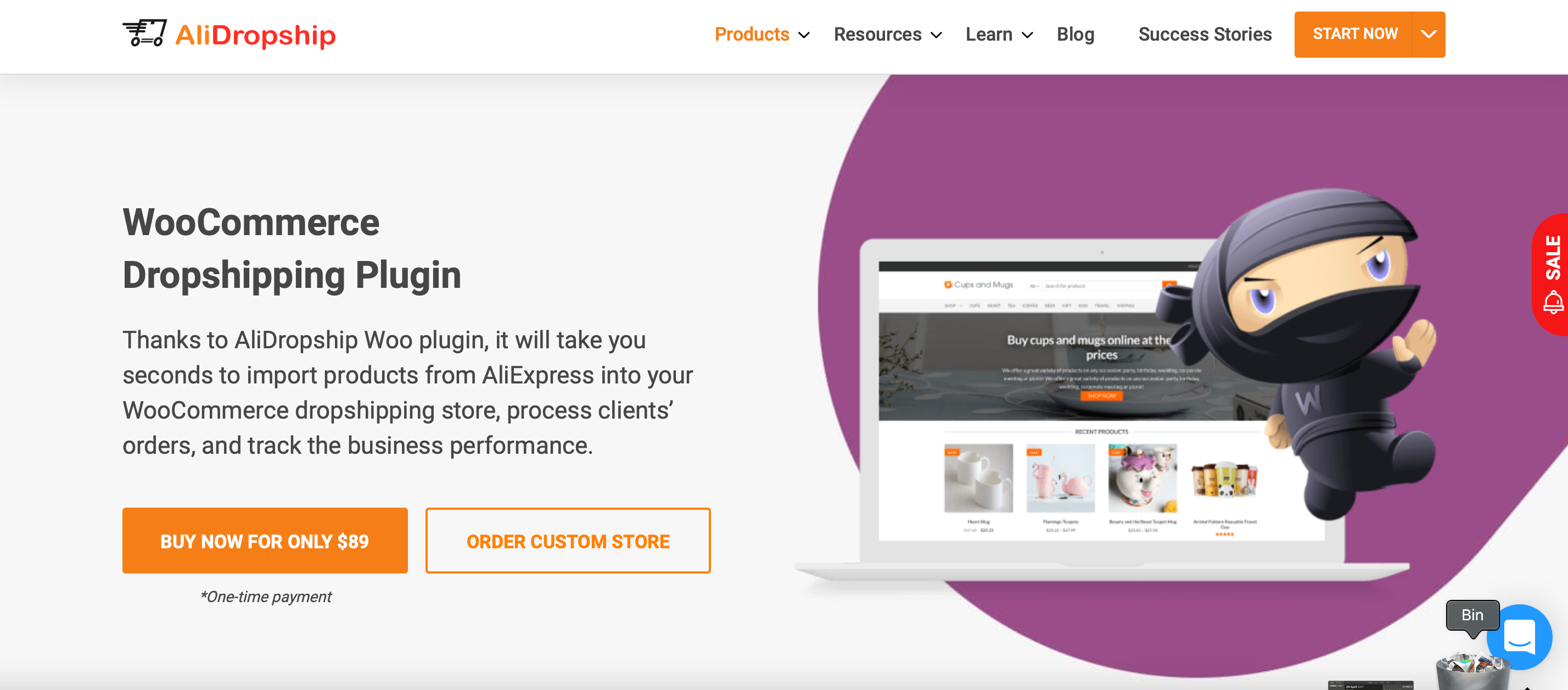
To add any of these extensions to WooCommerce with a WordPress.com account, go to the back end of your WordPress site, and in the left-side tab, select WooCommercePlugins.
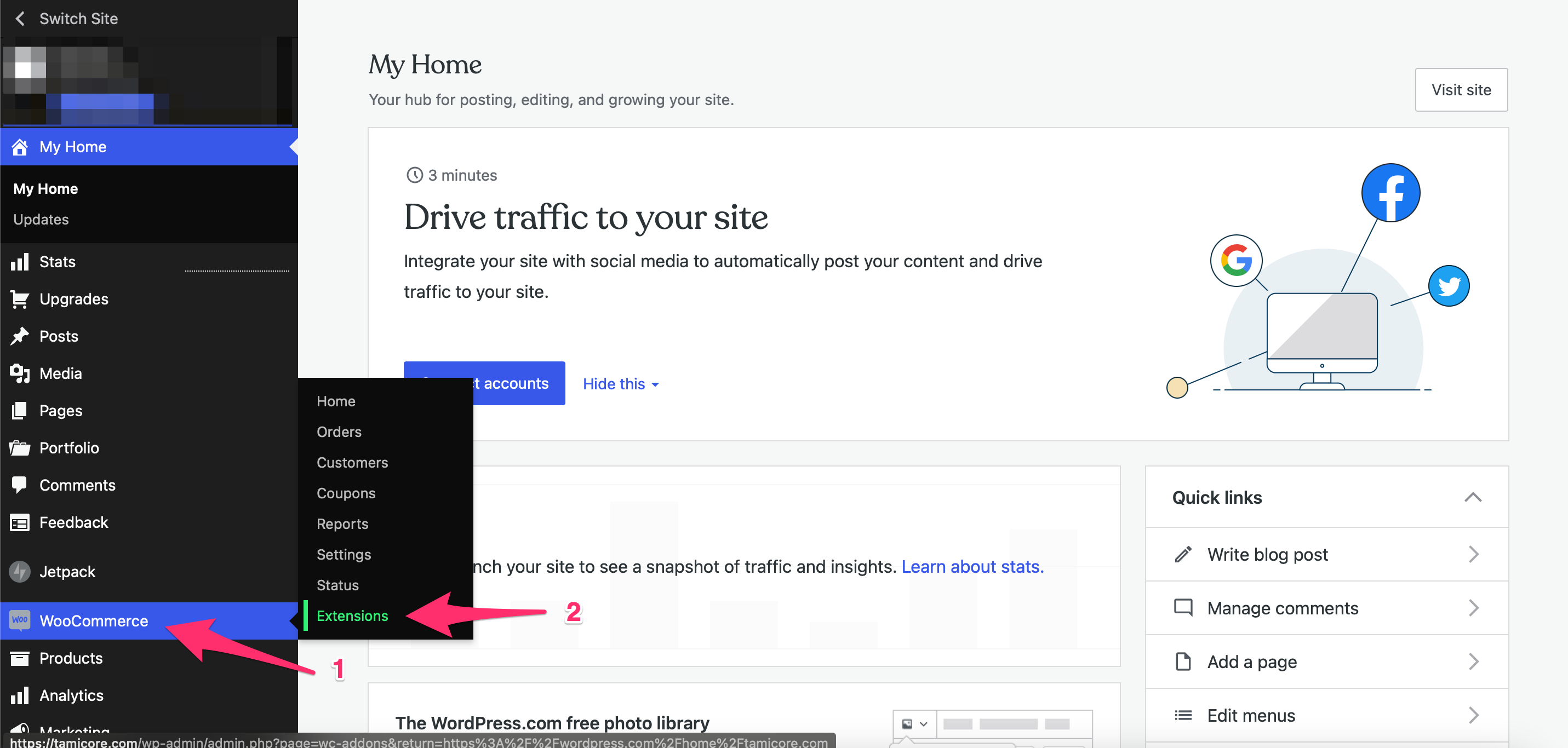
Check out this in-depth guide to installing plugins through WordPress.org for more details and advice.
3. Decide which products you will sell
You’ll hear the term “product niche” floating around a lot in the dropshipping community. This is a subset of a product category that serves a specific customer base. There are many products dropshippers can and do sell through their stores. Selecting the right product comes down to a few factors, including:
- Market research. You’ll need to do detailed research to find a profitable product niche. You can start with a simple Google search for “dropshipping product niches.” Then, using Google Trends, you can search to see what the interest in that niche is like using a mix of keywords. For more information on finding a product niche, check here.
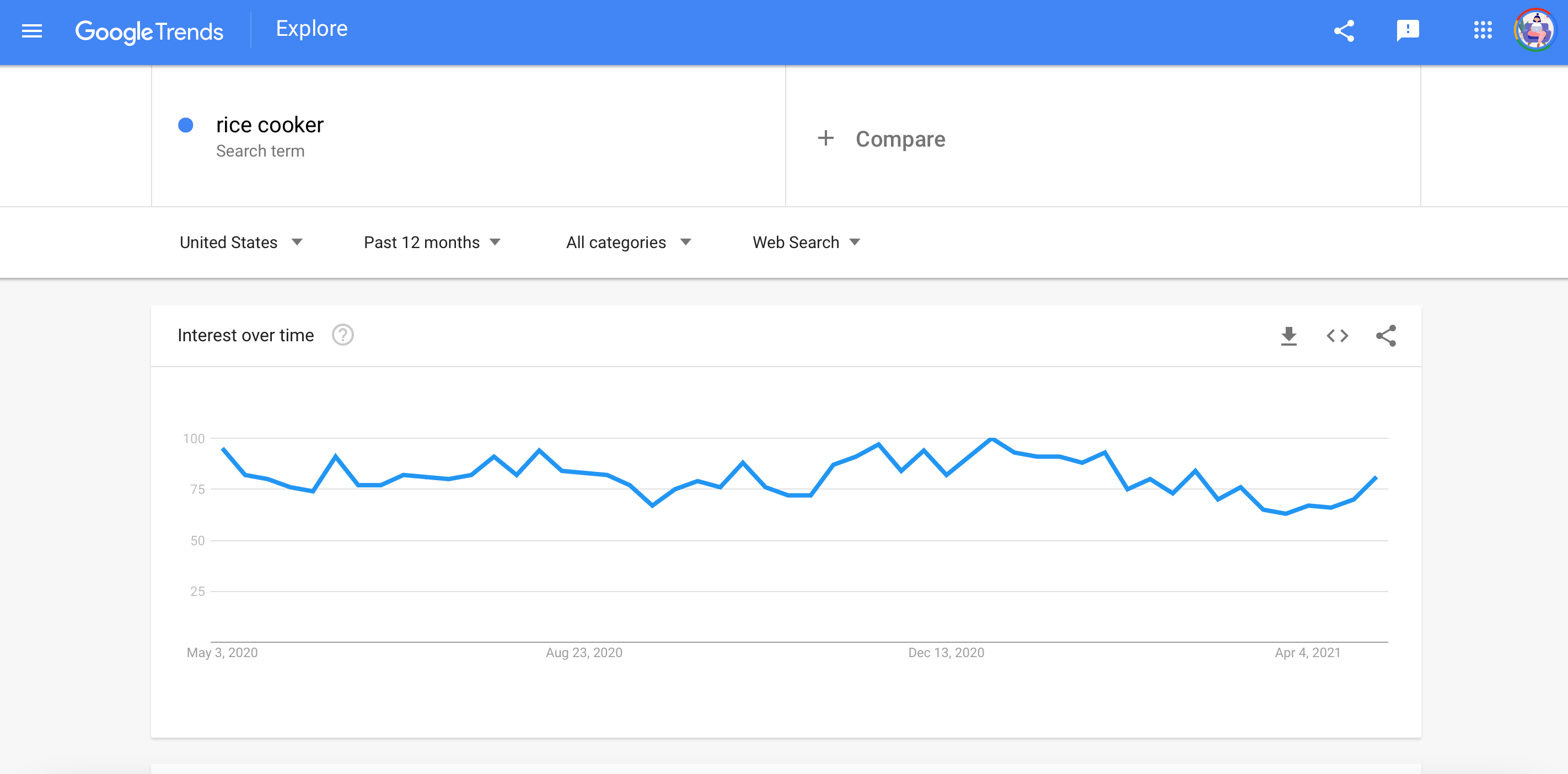
Google Trends search for a potential dropshipping product
- Consumer interest. You’ll need to do proper research to ensure that you have a significant enough customer base. Also, leverage online communities and platforms. Use Facebook Groups to find out consumers’ pain points and to ask other dropshippers for advice and tips on which products to sell. Use social shopping sites like Pinterest or Etsy to find out which products are popular and which don’t sell well. You can also leverage Facebook Audience Insights, a free tool that can help you gauge consumer interest in a product niche.
- Competitor research. Check out other dropshippers’ stores and how they source and sell their products. This can give you a good idea of which products to sell and which ones to avoid. For example, if a competitor is selling a product at a price you cannot afford to sell at, you might want to stop considering that product or figure out how to differentiate.
4. Select your supplier
Choosing the right supplier is important for your business because they handle the actual fulfillment of orders. Imagine if you offer a great online experience but a supplier delays a package or sends a faulty product. That would ruin all the work you’ve put into marketing and could harm your business’ reputation.
These are the most important things you need to do before selecting a supplier:
- Thoroughly research your supplier before committing. Even if you’re using a plugin that finds and vets suppliers, you will want to do your own due diligence. Find out their ratings/reviews from other ecommerce sellers and even customers. You can often find a seller on AliExpress or even from a simple Google search and read their reviews. You have to thoroughly vet them, or you might get scammed. For a more detailed guide to finding and researching suppliers, check here.
- Ask the right questions. After gathering a list of potential suppliers, you’ll need to find out from them if they are the right fit for your business. Questions should center around their main purpose — order fulfillment. Here are some questions you can ask:
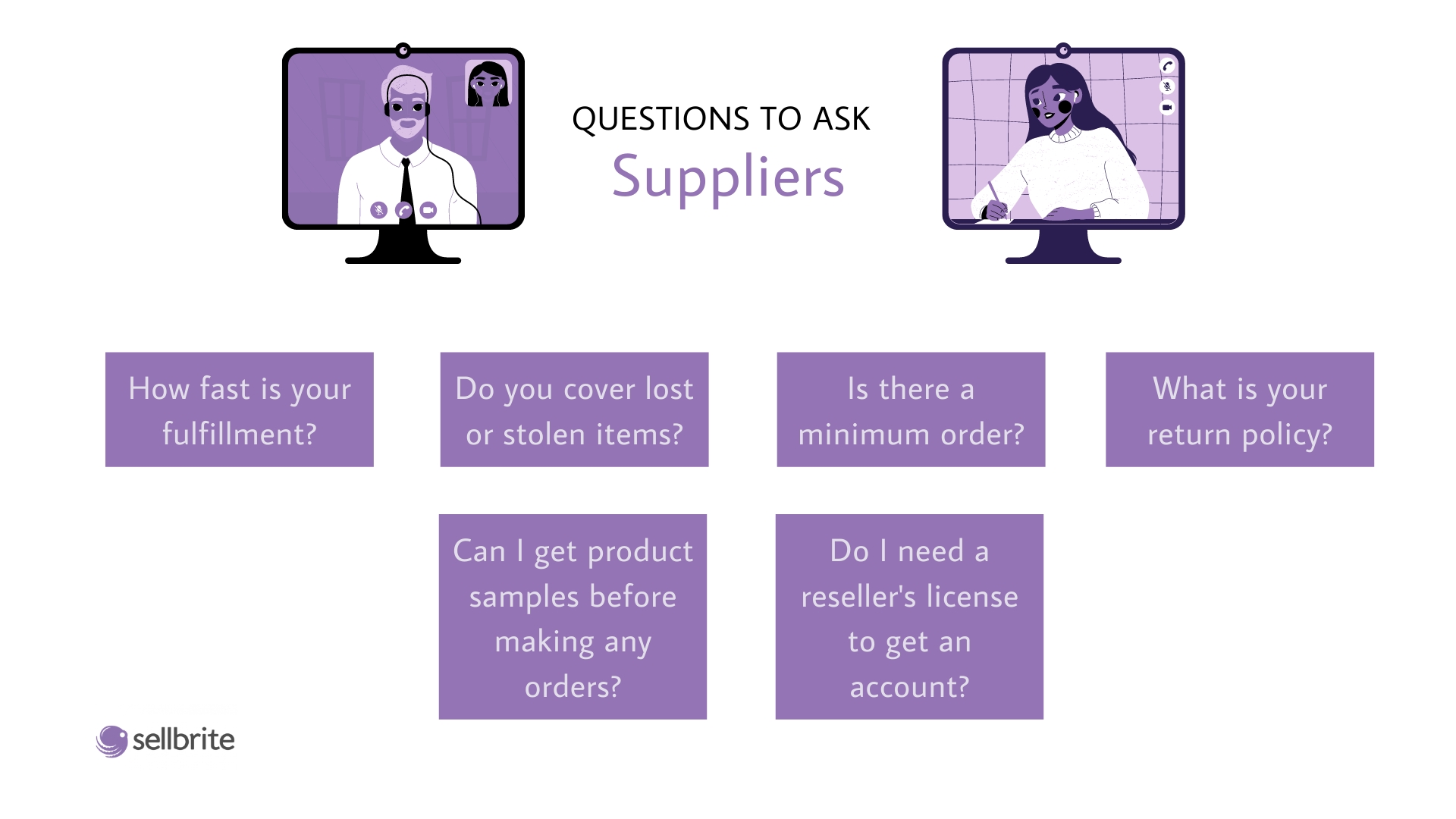
Some questions to ask potential suppliers
- Find multiple suppliers. You’ll need more than one supplier on hand in case of sold-out or back-ordered products. Using key terms that pertain to the products you are selling will help in your search for the right supplier.
- Try your own products. Order from the suppliers and take notes on things like the quality of the product, shipping times, and customer service.
The work doesn’t end when you’ve settled on your supplier(s). You may not be the one fulfilling the order, but you’ll likely be the one helping customers when they need it. For example, most dropshipping sellers will have to contend with longer shipping times.
This is something you should definitely clarify with concrete numbers for your customers. You can do this by ordering the products yourself and tracking how long it takes for them to be delivered. For a deeper dive into tackling delivery times for dropshipping, check here.
3 tips to grow your WooCommerce dropshipping store
Customers won’t come if you don’t let them know that you exist. So, you need to focus the energy that’s not aimed at order fulfillment on growing your store and building your customer base.
1. Focus on marketing
From social media to email marketing and paid ads, there are many tools and strategies that you can use to market your products. You could run ads on Facebook and Instagram and find retargeting opportunities through these platforms.
The CEO of The Social Shepherd, Jack Shepherd, shares some advice for ecommerce sellers, saying, “As with any dropshipping store, you need traffic, so you’ll no doubt be spending your marketing budget on ad platforms such as Facebook and Google, amongst others. So you need your pixels & tracking in place to ensure you understand which campaigns are getting you the newest customers.”
He recommends PixelYourSite to track campaigns.
You could also collect and send newsletters or cart abandonment emails. Guerric de Ternay, founder of GoudronBlanc, suggests MailPoet for email marketing.
“The team at Automattic [owners of WooCommerce] recently acquired the business,” he says. “[It’s] great for making customers aware of new products and/or for managing an email sales funnel.”
Use SEO wherever possible — in product descriptions, image alt text, link URLs. For more details on using SEO for your dropshipping business, check out Oberlo’s guide.
2. Create content
Apart from selling your products, your major focus should be providing value to customers. You can create content based on this question alone — how does this piece of content help my customers?
If you run a women’s clothing brand, you could create TikTok videos that show different ways to style a pair of jeans or have influencers do it. If you sell dog toys, you could create blog articles around dogs’ health and wellbeing.
You can also leverage user-generated content (UGC). Encourage customers to take photos and create videos with your product in them and use a brand-specific hashtag to share them.
Luggage brand Away is a great example of a brand that creates great content — both original and user-generated. They share user-generated posts on their social media and articles written by influencers in their online magazine. They also implemented a hashtag campaign, #travelaway, that has 70k interactions per week.

Away branded hashtag usage over a seven-day period from BrandMentions

User-generated Instagram post from Away
3. Build trust with customer reviews
Encourage your customers to leave reviews on your website and social media. This can help build trust among new buyers and show you what to tweak to improve your business model.
Customer reviews are already included as a feature when you install WooCommerce. However, there are additional settings you might have to configure in order to ensure they show up properly.
If you don’t automatically have reviews showing up on your site, go to the sidebar and click WooCommerce> > Settings.
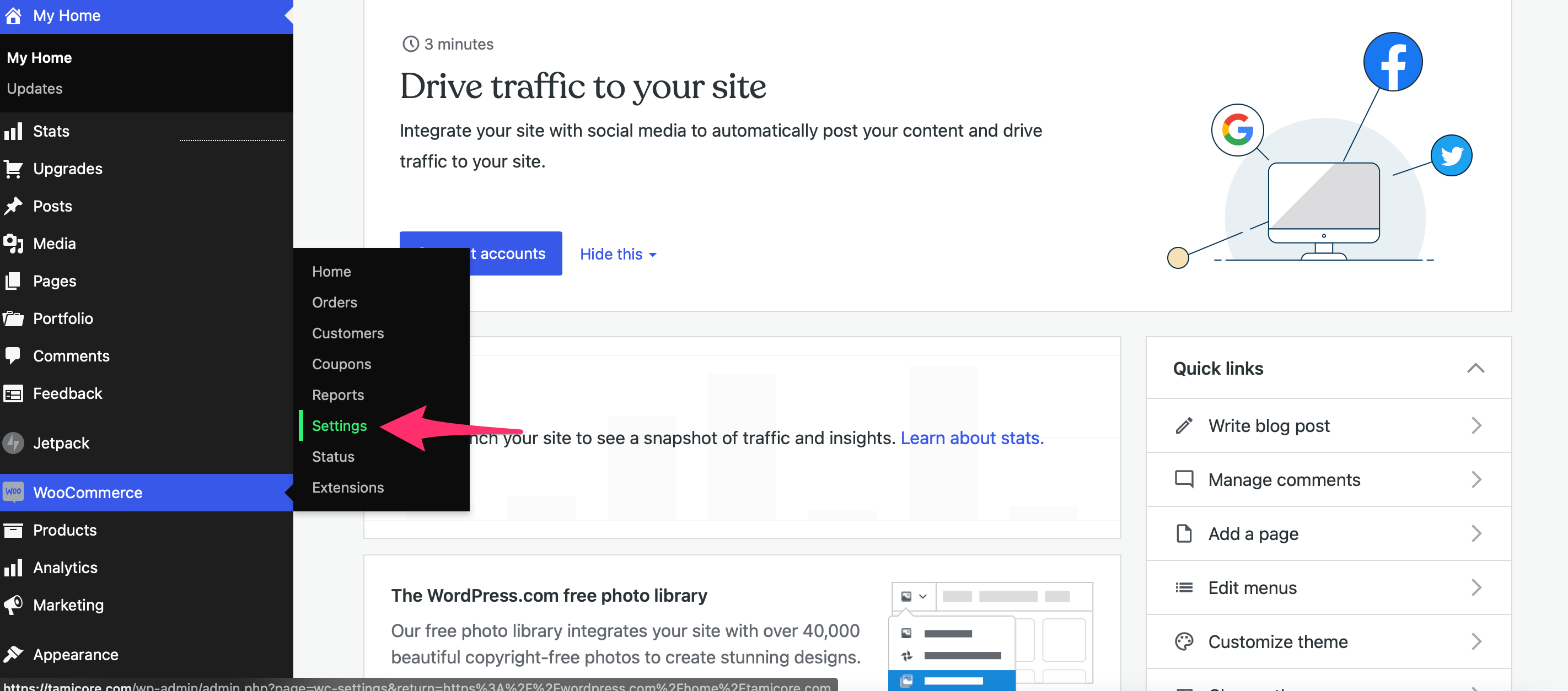
On the Settings page, click the Products tab and scroll to the bottom.
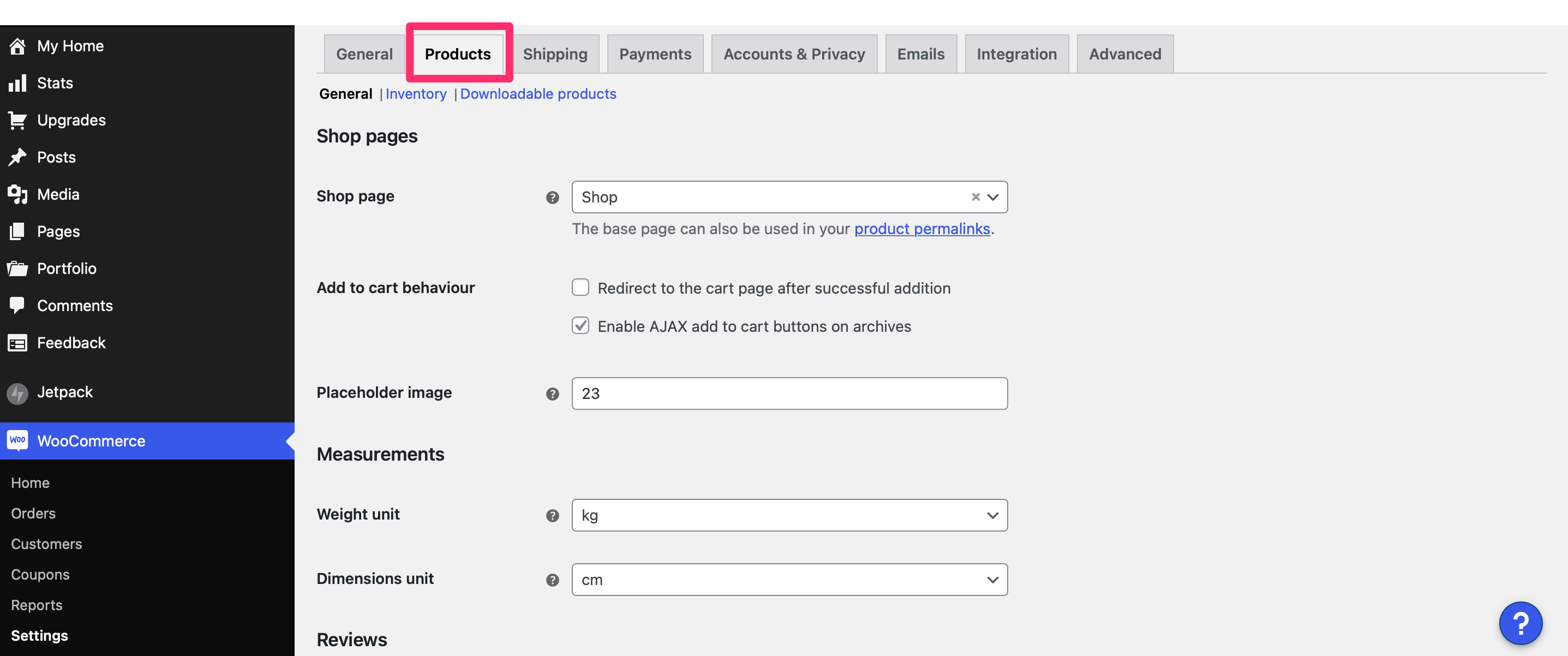
Here, you can activate and configure your review settings. Click Save changes once you’re done.
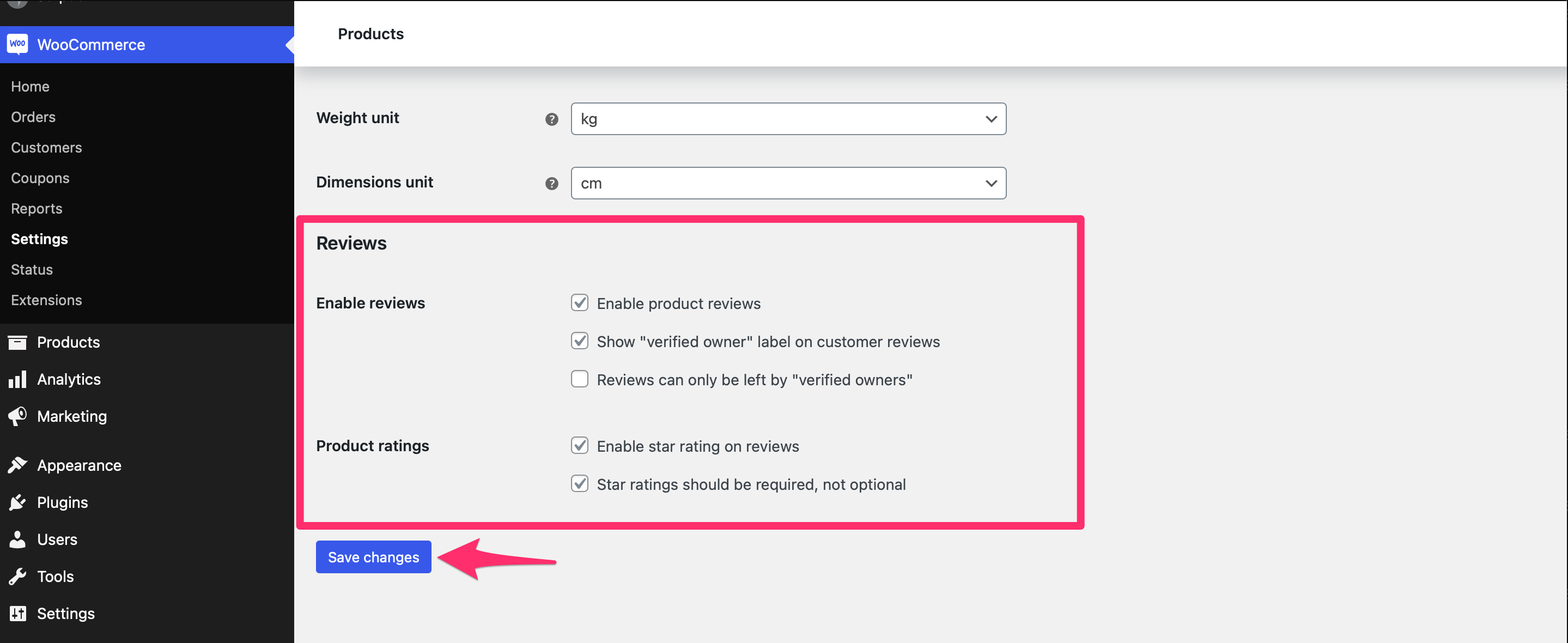
You can also use the WooCommerce Product Reviews Pro extension to manage reviews. This extension allows you to upgrade your product reviews by adding Amazon-style filtering. It also helps you add additional review and discussion functions to your site. With this extension, you can also enable users to share product photos and videos.
4. Leverage Google Shopping
Putting your products on Google Shopping can help you increase visibility and convert new customers. Thirty-six percent of consumers start their shopping journey with search. And as of 2018, 76.4% of retail search ad spend in the U.S. is dominated by Google.
Through Google Shopping, customers can get a snapshot of relevant products in one place, compare prices, and see the stores that sell them all at once. It essentially acts as an aggregate ecommerce marketplace.
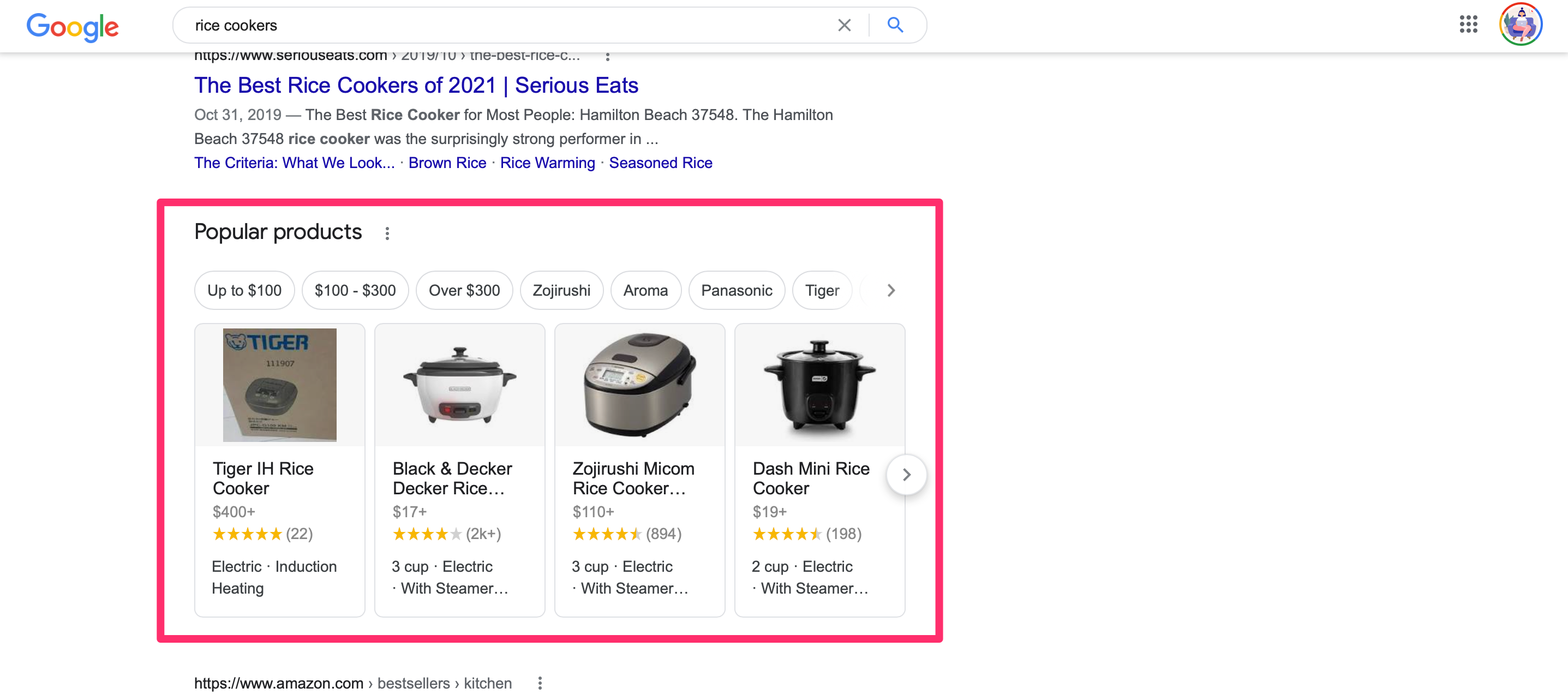
WooCommerce has an extension, Google Product Feed, that can help import your product listings into Google Shopping for $ 79 a year.
Start small and scale your WooCommerce dropshipping store
It can be tempting to rush into a dropshipping business and expect a six-figure revenue in just a few months. However, as with many businesses, it’ll take a while to find your footing with dropshipping. You’ll likely make many mistakes before you settle on the right business model for you. And that’s okay.
Do plenty of research and start with a bare-bones operation. Scale your business over a period of time, implement new plugins and processes for your store, and be patient. As your knowledge and experience increase, you’ll gain more customers — and confidence.
Digital & Social Articles on Business 2 Community
(117)

